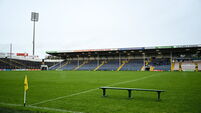Christmas light safety
DO’S
1 Choose LED lighting indoors and outdoors when you buy or replace your lights. Not only will they save you 90% of the energy of old style incandescent filaments and last up to 50,000 hours, but as low voltage (12-24V), are less prone to overheating.
2 Give your lights a condition check when you retrieve them from their tangled nest. Look for any fraying, kinks in the wiring, cracked bulbs or bare wiring. If in doubt, throw them out.
3 Replace blown bulbs immediately. Don’t change the bulbs when the set is turned on, you could be lighting up more than the tree. Use bulbs of the same type and rating.
4 Site outdoor and indoor strings and power cables where pets cannot chew or become entangled in them and obviously avoid high traffic areas. A yanked set of lights can fell a heavy Christmas tree.
5 Connect outside lighting through a residual current device (30mA RCD protected socket) to ward off the potential of electrocution.
6 Look for the extra low voltage symbol which is ‘III inside a diamond’. These light sets are especially safe and reduce the chance of electrocution. Filament lights can be either, whereas LEDs are always low voltage.
7 Buy lights from a reputable source. Some cheaply made lighting from the Far East have been proven to have thin wiring and inadequate safety ratings.
8 Use cables intended for outdoor use and where external power points are likely to get wet, ensure they are angled downward.
DON’TS
1 Never use outdoor lighting indoors. A small house symbol with an arrow pointing outward or inward indicates the lights’ intended use. An Ingress Protection Rating (IP) will run from rain proof to watertight and is shown in a water drop symbol. IPX3 is the minimum standard to look for.
2 Install proper watertight connectors for all outdoor lighting and protect your lights against wind damage with well considered positions.
3 Never attempt to join two sets of lights together or put two sets of lights on the same plug. Safe, modern lighting up to CE standard are cheap and widely available.
4 Don’t run cables to lights underneath rugs and carpet. The pressure of footfall may be enough to break or fray the lines and there’s a danger of over-heating.
5 Never overload sockets and avoid using extension leads and adaptors.
6 Don’t let children play with Christmas lights. LEDs are in plastic housing making them safer around pets and kids than glass incandescent.
7 Don’t leave your lights on night and day. A simple timer will kick them on when it’s dark enough to enjoy them and unlit decorations can flash by day.
CHRISTMAS is an exciting time for animals and with the coming and going of visitors, they may well act out of character in this disruptive environment. Pine needles from your live tree, wreaths and garlands are extremely poisonous to animals, and can puncture the intestines if ingested. The water under the tree will not only carry natural toxics, but may harbour bacteria and fertilisers, net it off if possible. When you buy the tree, strike the stump on the ground. If it’s freshly cut, the needles will stay on the tree and the trunk will still be sticky with resin. Holly, mistletoe, poinsettias and lilies are unfamiliar plants brought in for the season and can be lethal for animals, so be wary of new puppies, teething and curious enough to have a go. Hook up live wires, tinsel and ornaments covered in artificial snow (a particularly nasty chemical cocktail). Young cats, looking for trouble will be completely fascinated by the new habitat created by a tree and trailing decorations, real or artificial. Secure the tree both at the base and with a simple hook and string half way up the trunk, securing it to the wall.












